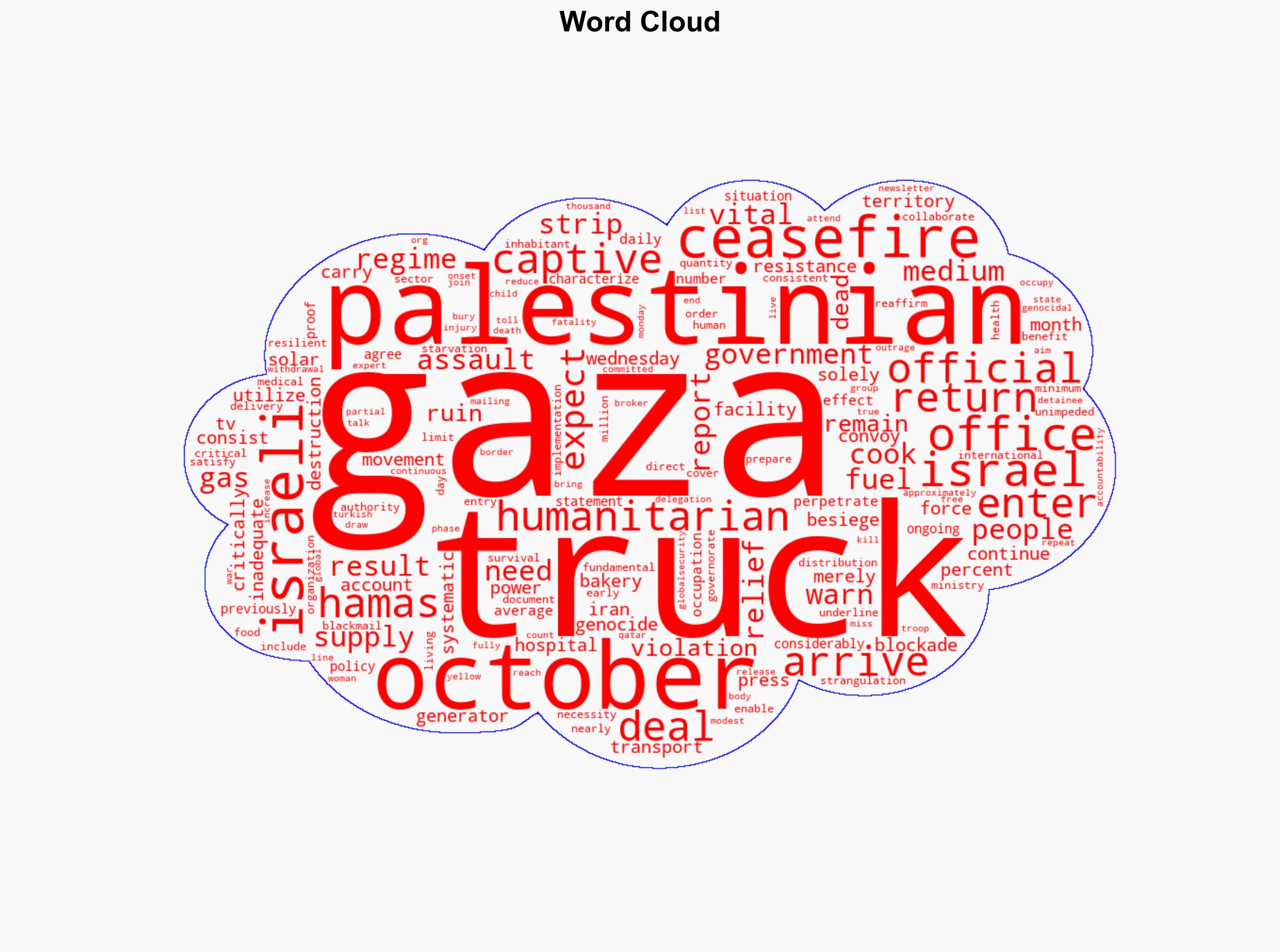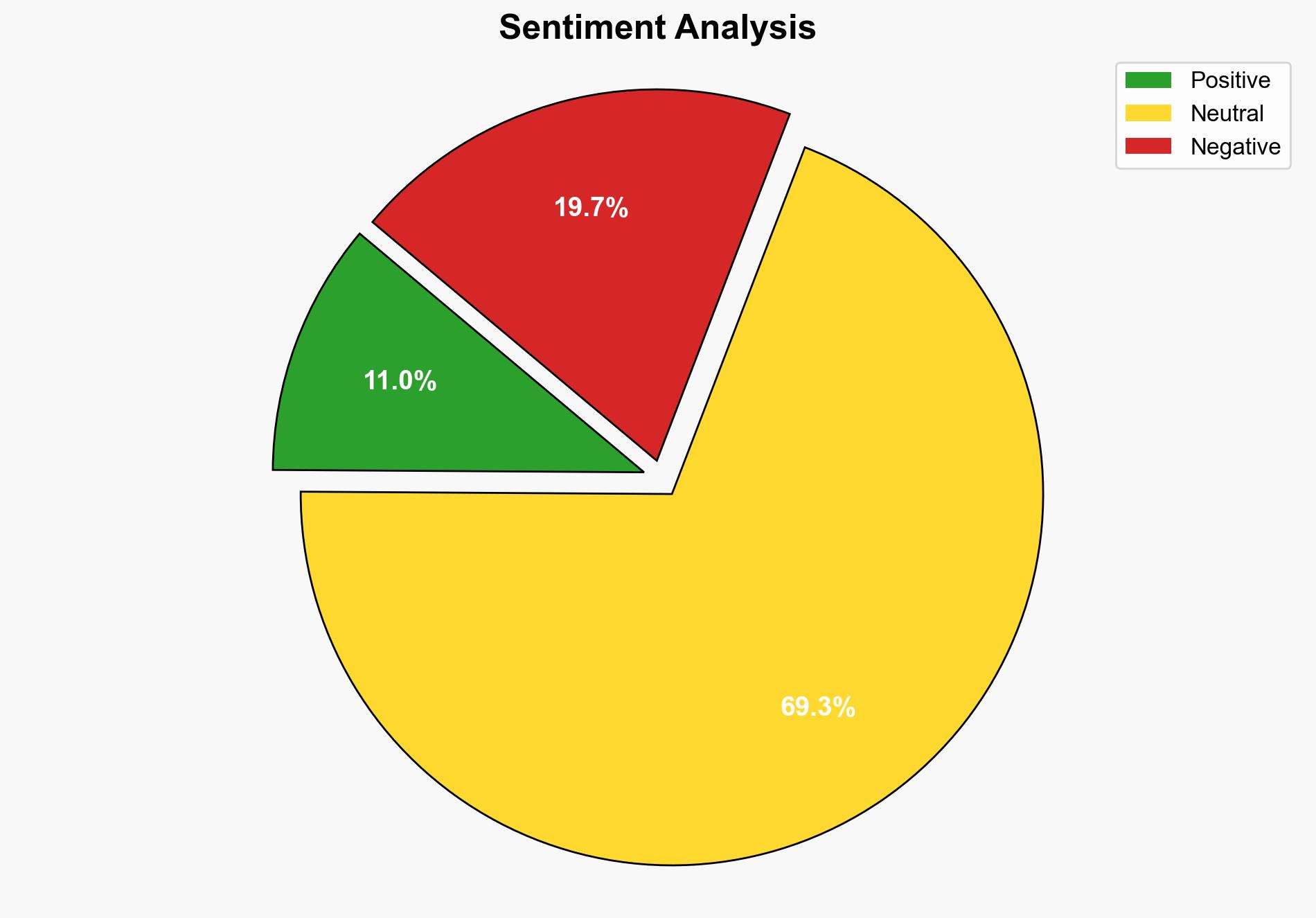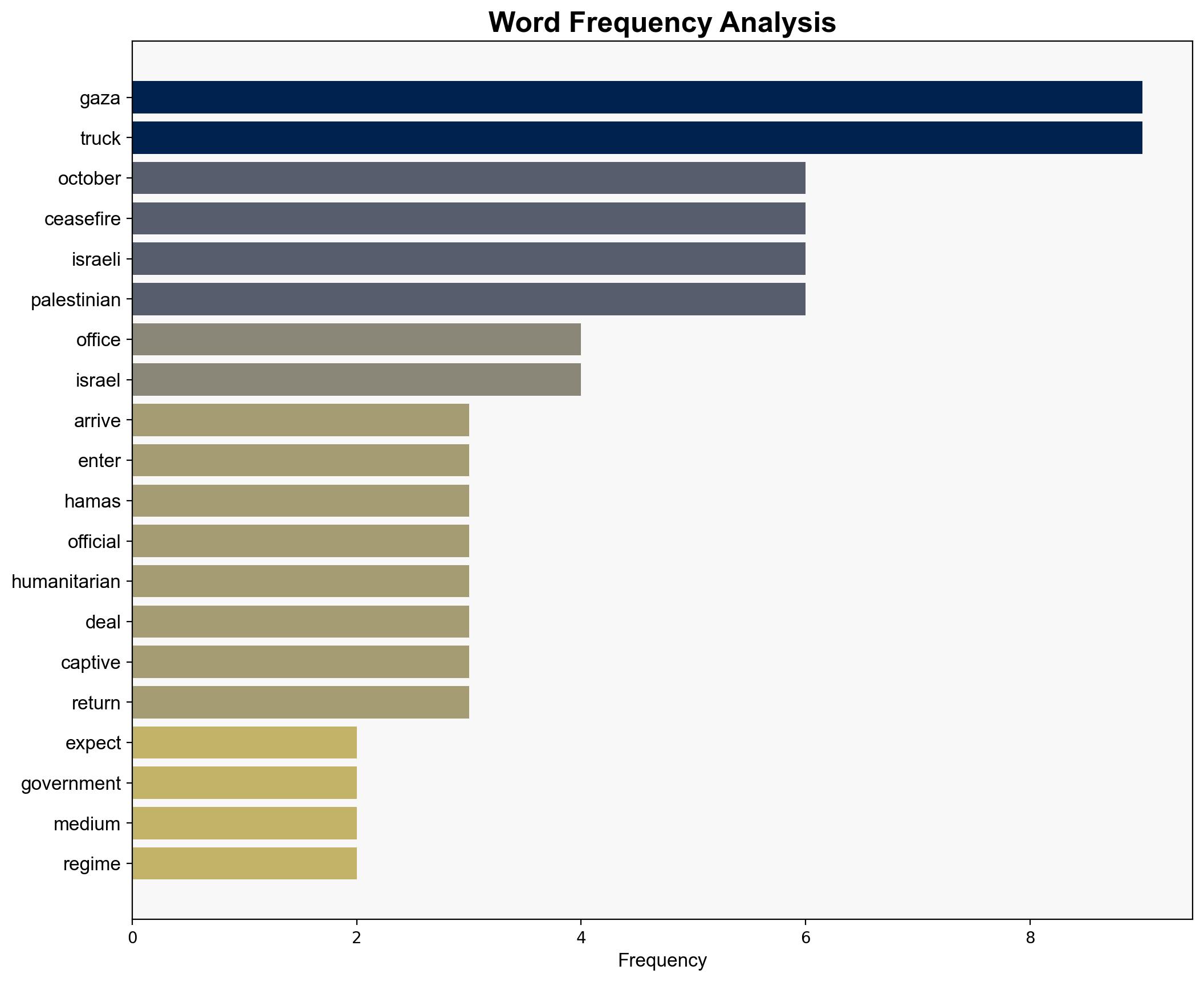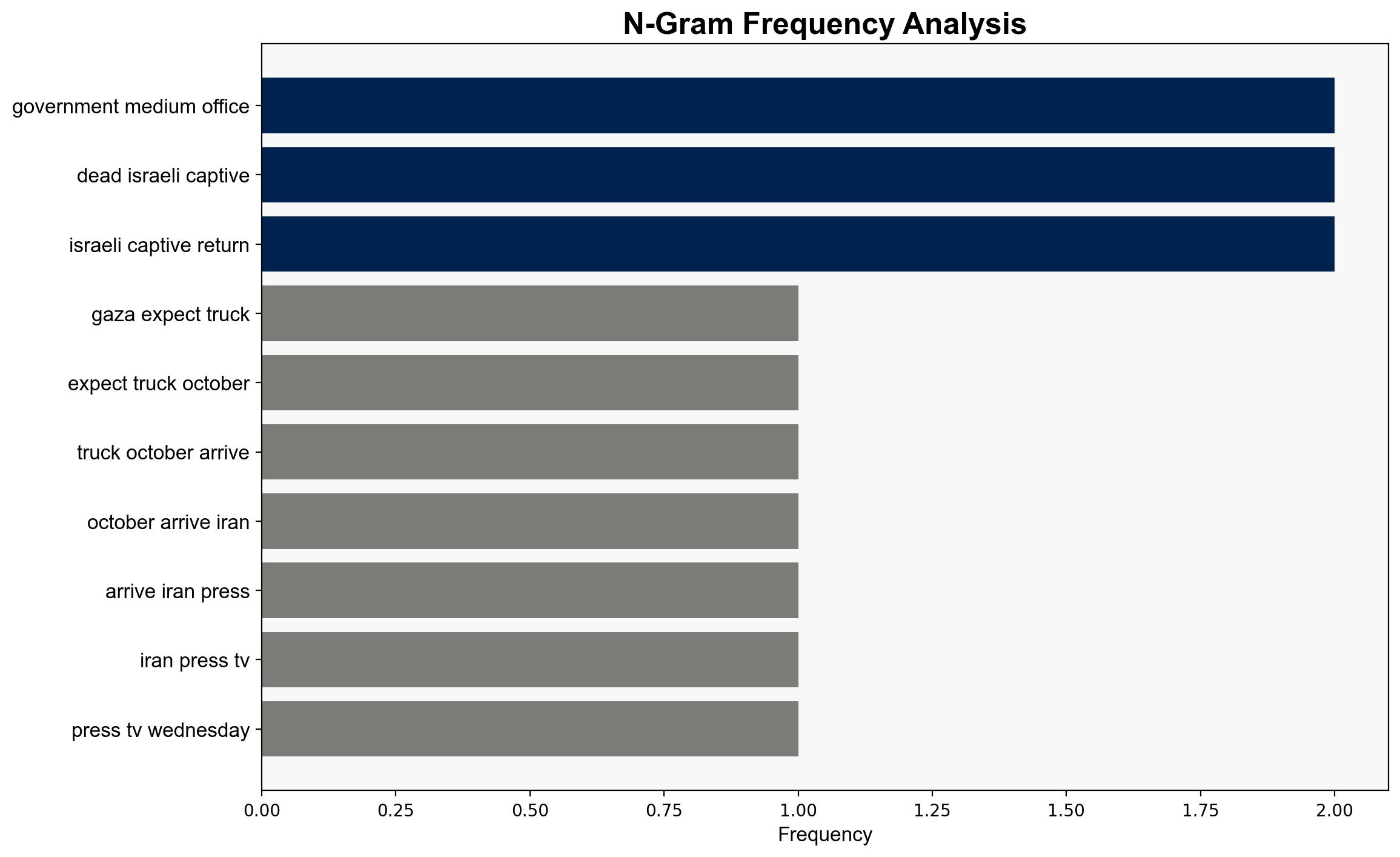Gaza expected 6600 aid trucks by October 20 only 986 arrived – Globalsecurity.org
Published on: 2025-10-23
Intelligence Report: Gaza expected 6600 aid trucks by October 20 only 986 arrived – Globalsecurity.org
1. BLUF (Bottom Line Up Front)
The most supported hypothesis is that logistical and political barriers have severely impeded the delivery of aid trucks to Gaza, reflecting ongoing tensions and strategic maneuvering by involved parties. Confidence level: Moderate. Recommended action: Engage in diplomatic efforts to facilitate humanitarian aid and monitor compliance with ceasefire agreements.
2. Competing Hypotheses
1. **Logistical and Political Barriers Hypothesis**: The significant shortfall in aid truck deliveries is primarily due to logistical challenges and political maneuvering by Israel and Hamas, which are using the situation to leverage negotiations and control over Gaza.
2. **Intentional Restriction Hypothesis**: The limited arrival of aid trucks is a deliberate strategy by Israel to exert pressure on Gaza, aiming to weaken Hamas and control the flow of resources into the region.
Structured Analytic Techniques (SATs) such as Analysis of Competing Hypotheses (ACH) suggest the first hypothesis is better supported due to the complexity of the geopolitical landscape and historical patterns of negotiation and conflict in the region.
3. Key Assumptions and Red Flags
– **Assumptions**: It is assumed that both Israel and Hamas have strategic interests in controlling aid flows. The assumption that logistical issues are genuine and not fabricated for strategic purposes is critical.
– **Red Flags**: The lack of transparent data on the decision-making process for aid delivery and potential bias in reporting from involved parties.
– **Blind Spots**: The potential role of third-party countries or organizations influencing the aid delivery process is not fully explored.
4. Implications and Strategic Risks
– **Geopolitical Risks**: Continued restriction of aid could exacerbate tensions, leading to further conflict and destabilization in the region.
– **Humanitarian Risks**: Insufficient aid exacerbates the humanitarian crisis, increasing suffering and potentially fueling radicalization.
– **Psychological Risks**: The perception of international inaction or bias could undermine trust in global institutions and fuel anti-Israel sentiment.
5. Recommendations and Outlook
- **Diplomatic Engagement**: Facilitate dialogue between Israel, Hamas, and international bodies to ensure unimpeded aid delivery.
- **Monitoring and Compliance**: Establish mechanisms to monitor compliance with ceasefire agreements and aid delivery commitments.
- **Scenario Projections**:
– **Best Case**: Successful diplomatic intervention leads to increased aid flow and stabilization.
– **Worst Case**: Continued restrictions lead to humanitarian catastrophe and renewed conflict.
– **Most Likely**: Incremental improvements in aid delivery amidst ongoing political tensions.
6. Key Individuals and Entities
– **Hamas Leadership**: Key decision-makers in Gaza.
– **Israeli Government Officials**: Responsible for border control and policy decisions.
– **International Humanitarian Organizations**: Facilitators of aid distribution.
7. Thematic Tags
national security threats, humanitarian crisis, geopolitical tensions, Middle East conflict




